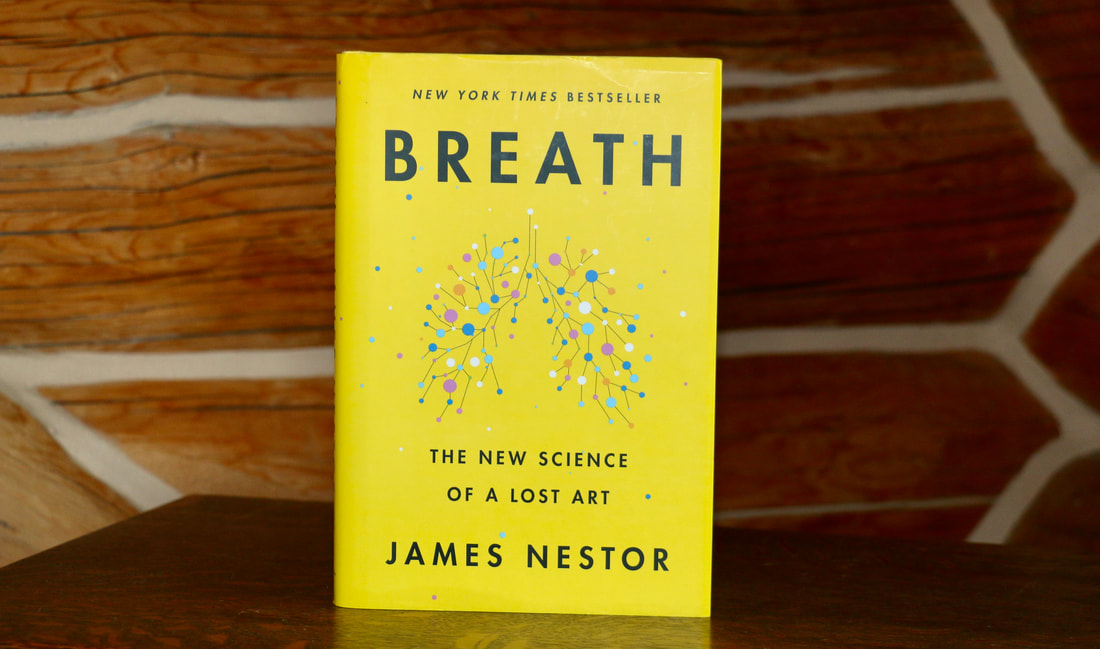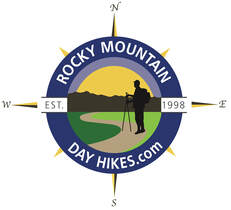|
Notes from the
Trail |
|
Breath Book Review by Murray Selleck Breathing is a pretty natural thing. We humans average 25,000 breaths a day without even thinking about it. How would it feel, though, if we did think about each individual breath and reap the benefits of more efficient breathing? This is what I’ve been trying to practice for awhile since reading the book, BREATH - The New Science of a Lost Art, by author James Nestor. I wouldn’t call this book a scientific study or even place it in the genre of self help. However, I do find the ideas presented to be compelling and the book is an intriguing read. I should also say that the ideas presented are controversial to some, not wholly based as accepted or proven science, and the ideas regarding the healing benefits or reversing chronic illness just by changing how a person breathes are mostly anecdotal. "WITH THAT IN MIND I STILL FOUND THE IDEA OF BECOMING A BETTER AND MORE THOUGHTFUL BREATHER CONVINCING..." Nonetheless, with any book a person reads for leisure, self help, or education there will be ideas that resonate and are taken to heart or dismissed with the closing of its cover. With that in mind I still found the idea of becoming a better and more thoughtful breather convincing enough that I do practice a few of the breathing techniques presented in this book. In essence, Nestor’s book Breath, on its most basic level, touts the benefits of inhaling through the nose and exhaling out the mouth (circular breathing). Further, the longer a person inhales with even longer exhales our lung capacity will increase. He writes we have become a world of mouth breathers (inhaling and exhaling through the mouth only) to our health’s detriment. Mouth breathing has brought on a host of ailments that with circular breathing can be corrected. Nestor put himself through many breathing experiments that bordered on the extreme to painful. I admired his tenacity enduring all those self imposed tests and his willingness to travel the world in search of answers from breathing practitioners and scientists studying the subject. I believe that is what has lead me to begin my own attempts at circular breathing. I’m trying to make this change in my breathing intuitive so I don’t have to think about it whether I’m sitting in front of my computer writing or hiking up a steep trail. Another beneficial breathing concept Nestor promotes is breathing solely through the nose. “Keep your mouth shut” is one subtitle in a chapter near the end of the book. This is good advice for many of us these days. Less talking and more listening! There are a few instances in Breath that describe old and bizarre historical experiments on animals that I just as well could have done without reading. If any of those studies were to happen today the people involved would be discredited double quick. However, the inclusion of such a morbid history reinforces the idea of how long breathing has been studied. The fact is many different techniques of breathing have been practiced for centuries throughout history by many different cultures. These techniques have ebbed and flowed in style and out over time but perhaps the current interest in better breathing techniques is on an upswing again. My personal experience with changing my breathing pattern has been met with mixed results. When I am out ski touring, snowshoeing, or hiking up a steep ascent I catch myself gulping air through my mouth. After decades of breathing the way I have new breathing habits are hard to establish. But once I realize I’m gasping for air I quickly resume inhaling through my nose and exhaling through my mouth. I also try to breath only through my nose during these activities but it is a challenge. "MY NEW BREATHING PATTERN CONTROLS THE PACE AND NOT THE PACE CONTROLLING MY BREATHING!" One benefit that I have realized through circular breathing is I can maintain a very consistent pace whether backcountry skiing or hiking summer trails. My new breathing pattern controls the pace and not the pace controlling my breathing (gasp)! When I start out I am less likely to start fast and try to get away from the trailhead as quickly as I can. Part of that way-too-fast pace at the start is the excitement of getting out on a trail. With better breathing I can be more “in the moment” from the very start, be more aware of my surroundings, and feel more calm and less inclined to “cover some distance.” Another benefit dawned on me this past winter. I consistently came home saying I was overdressed and overheated. I didn’t realize until later in the winter that by breathing “circular” I was changing my metabolism. My new breathing was making me warmer even on the coldest of winter days while I was layering up in my usual old way. I adjusted my clothing layering system and finally towards mid-winter I once again maintained a comfortable temperature during my outings. Other benefits of better breathing are reduced stress, lower blood pressure, reduced lactic acid build-up in your muscles, increased energy, improved immune system, and increase the feeling of being in the moment, present, and calm. I do recommend reading BREATH - The New Science of a Lost Art by James Nestor for those who are interested. In the Appendix of Breath, Nester offers several different breathing techniques from the basic to pretty involved. It’s all interesting and worth experimenting. So as you begin a new hiking season in Rocky Mountain National Park think about each breath you take. Are you gulping for air? Are you short of breath? Are your legs tired soon after starting? Change your breathing. Practice breathing more efficiently. All you might risk is better well being!
0 Comments
Leave a Reply. |
"The wild requires that we learn the terrain, nod to all the plants and animals and birds, ford the streams and cross the ridges, and tell a good story when we get back home." ~ Gary Snyder
Categories
All
“Hiking -I don’t like either the word or the thing. People ought to saunter in the mountains - not hike! Do you know the origin of the word ‘saunter?’ It’s a beautiful word. Away back in the Middle Ages people used to go on pilgrimages to the Holy Land, and when people in the villages through which they passed asked where they were going, they would reply, A la sainte terre,’ ‘To the Holy Land.’ And so they became known as sainte-terre-ers or saunterers. Now these mountains are our Holy Land, and we ought to saunter through them reverently, not ‘hike’ through them.” ~ John Muir |
© Copyright 2025 Barefoot Publications, All Rights Reserved




